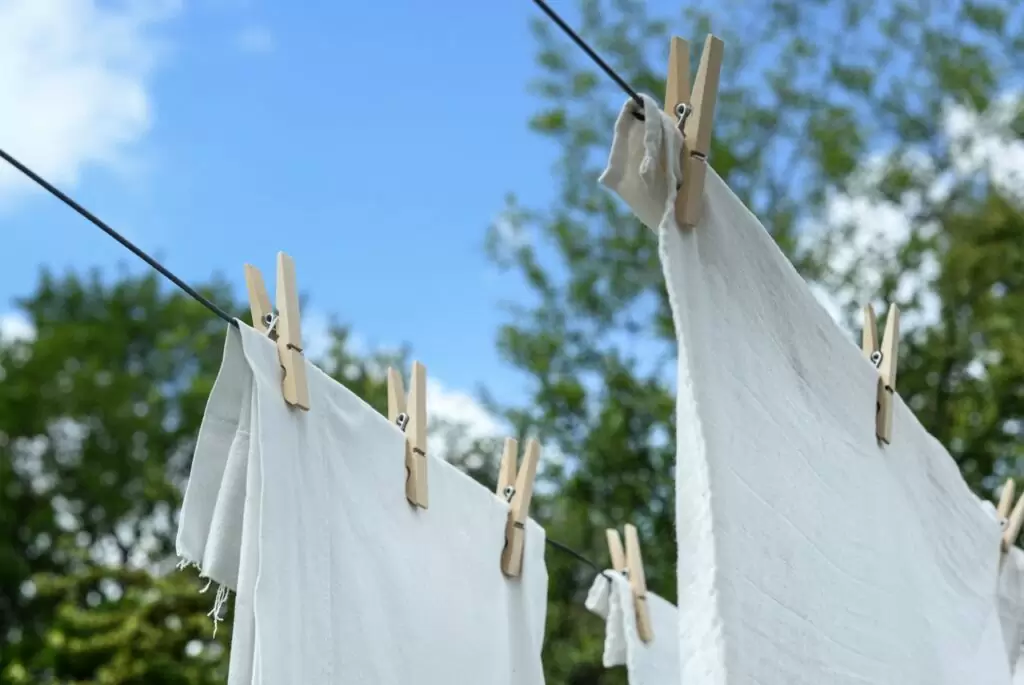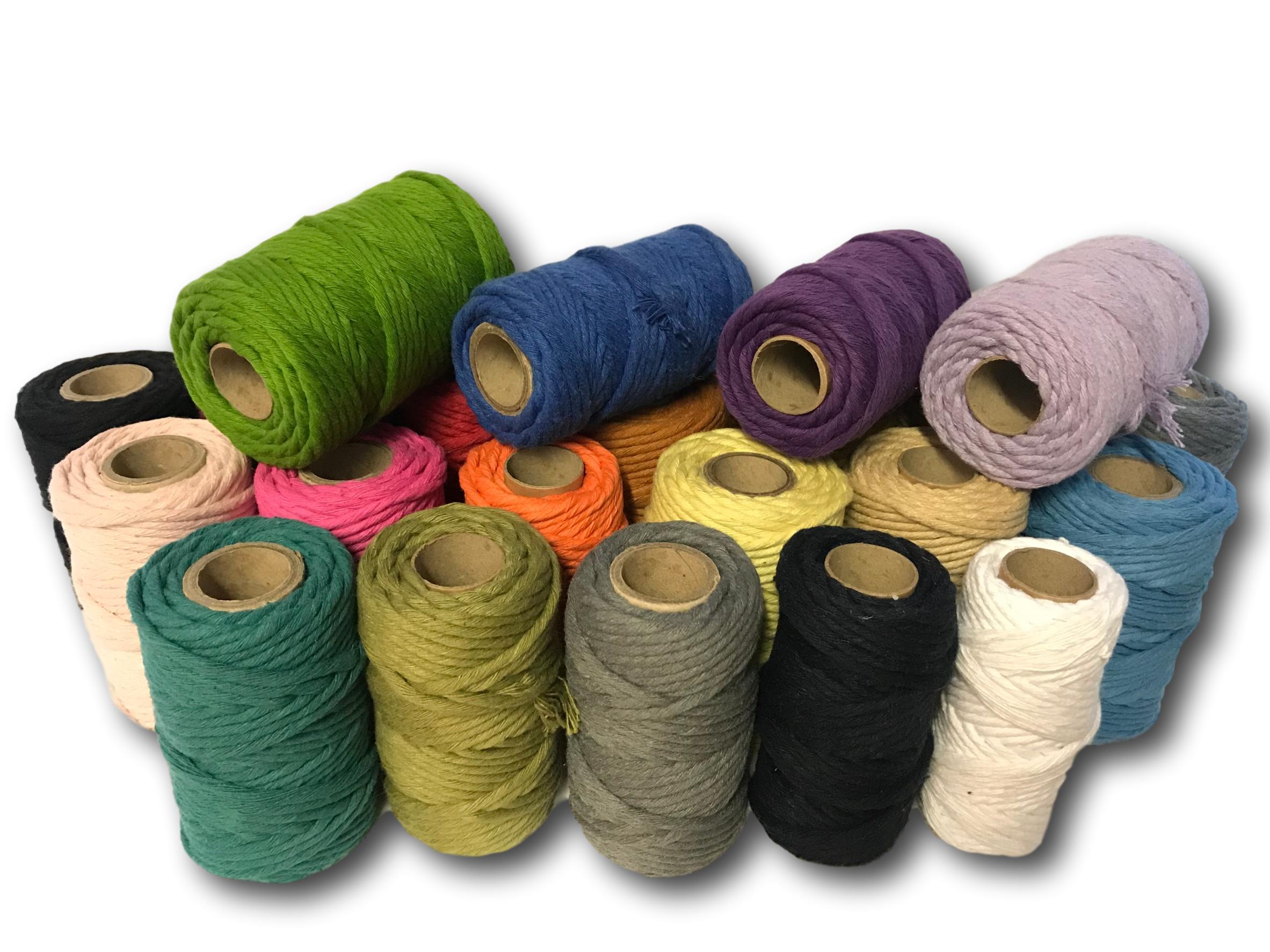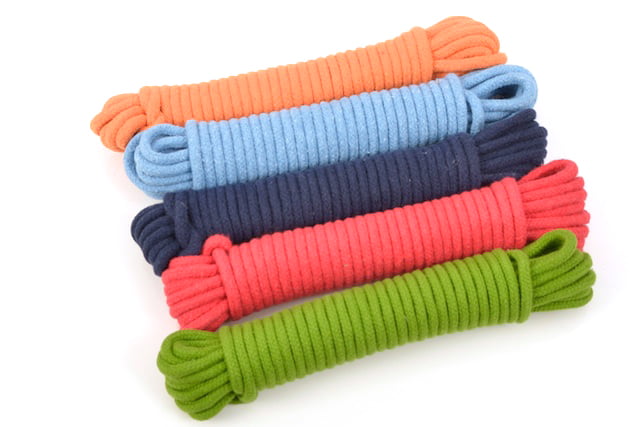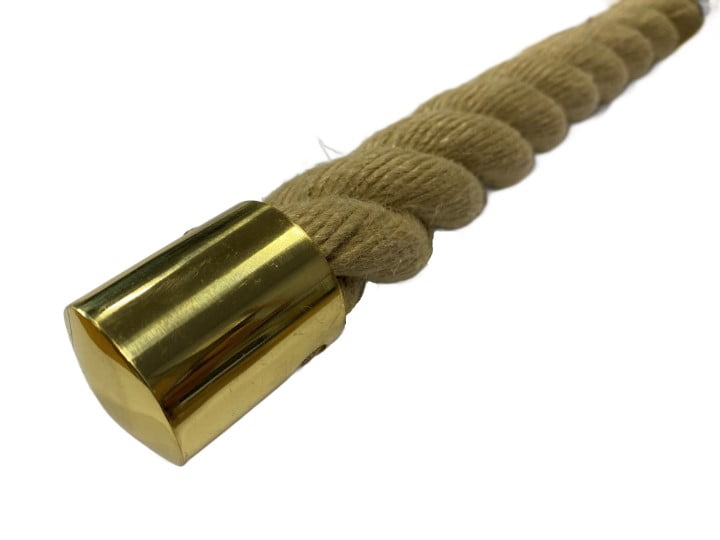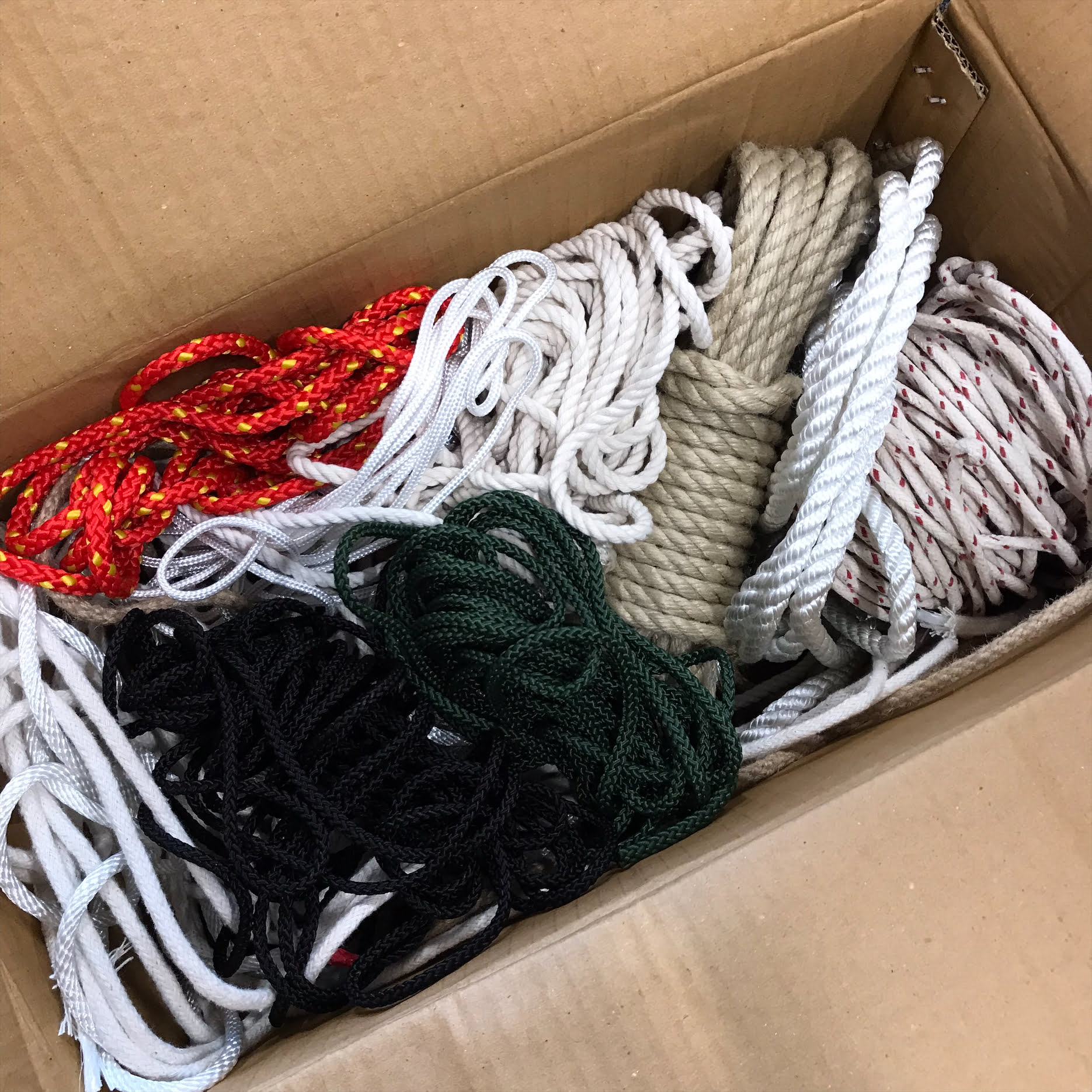
In today’s fast-paced world, where digital solutions and high-tech tools dominate the landscape, it’s easy to overlook the enduring effectiveness of simple, time-tested methods in managing crowds.
One such method is the use of rope barriers – a tool that has been guiding and organising people for centuries. But why do these seemingly basic devices still hold their ground in an age of sophisticated crowd-control technologies?
Keep reading as we delve into the enduring relevance of rope barriers in crowd management, exploring their history, psychological impact, and practical benefits. From their ancient origins to their modern-day applications, rope barriers continue to play a crucial role in creating orderly, safe, and pleasant environments in various settings.
What is a rope barrier?
A barrier rope is a physical crowd control tool used to delineate spaces, guide movement, and manage queues in various settings. Typically consisting of a barrier rope or retractable belt attached to stanchions (upright posts) with end hooks, barrier ropes create a clear visual boundary that directs people where to go or where not to go.
Rope barriers over time
The concept of using physical barriers to manage crowds isn’t entirely new. Rope barriers have been around for far longer than we may care to admit, all the way from ancient and mediaeval times.
Ancient and mediaeval origins
Ancient civilisations, such as the Romans, used ropes and barriers to manage crowds during public events and gatherings. For example, ropes were employed to cordon off certain areas or create designated paths.
In mediaeval Europe, rope barriers were used in various settings, including markets and festivals, to manage the flow of people and organise space. They often took the form of simple ropes or chains draped between posts.
Early modern era
The use of rope barriers became more formalised in the 18th and 19th centuries. During this period, they were commonly used in theatres, courthouses, and public spaces, to guide and control crowds. The stanchion (post) and rope system was a practical solution for maintaining order and directing movement.
In Victorian England, queue management became more structured with the introduction of more elaborate stanchion (post) designs. These were often made from brass or other metals and were designed to be both functional and aesthetically pleasing.
20th century
As urbanisation and public events increased in the early 20th century, the need for more sophisticated crowd management tools became apparent. Rope barriers continued to be used in places like banks, museums, and theatres, often incorporating more durable materials and designs.
The mid-20th century saw the introduction of modern materials and designs. Nylon ropes and plastic stanchions became popular, due to their durability and ease of maintenance. This period also saw the development of retractable belt barriers, which offered a more flexible and space-saving solution compared to traditional ropes.
Contemporary use
Today, rope barriers are used in a wide range of settings, from movie premieres and red-carpet events to airports and retail spaces. Modern stanchions often feature retractable belts, LED lights, and customisable signage. They are designed for ease of use, quick assembly, durability, and adaptability to different crowd control needs.
The psychology behind rope barriers
Rope barriers, or stanchions, are more than just physical tools for managing crowds – they play a significant psychological role in influencing people’s behaviour and perceptions. This is why they are still an effective tool used today.
Here’s a look at the psychological principles at work:
1. Visual cues and social norms
Rope barriers signal authority and create a structured environment. People tend to follow cues that suggest a form of order or regulation. When rope barriers are in place, individuals are more likely to conform to the expected behaviour, such as lining up or staying within designated areas.
The presence of rope barriers also often implies that a specific behaviour is expected or normal. People are influenced by the actions of others and are more likely to follow the crowd’s lead. If people see others adhering to the rope barrier’s constraints, they are more likely to do the same.
2. Personal space and boundary management
Rope barriers create clear boundaries and define personal space. This helps in reducing the feeling of crowding and allows individuals to feel more comfortable. When people know their space is clearly demarcated, they experience less anxiety and feel more in control.
The physical presence of rope barriers can also create a psychological buffer zone that makes individuals feel safer and more secure, reducing the likelihood of aggressive behaviour or pushing.
3. Perception of control and order
Rope barriers can give the impression of control and organisation, making the environment feel more predictable. When people perceive that the environment is managed and orderly, they are less likely to experience stress or confusion.
Furthermore, by visually communicating how space is organised and how movement is directed, rope barriers help set clear expectations. This can minimise uncertainty and frustration, leading to smoother experiences in places like airports, theatres, or events.
4. Behavioural cues
Rope barriers guide movement and behaviour by directing traffic flow. This can prevent chaos and create a more orderly experience, influencing people to follow designated paths and wait their turn.
The placement and design of rope barriers can subtly influence decision-making. For instance, rope barriers can lead people to choose specific routes or areas, helping to manage congestion and streamline operations.
5. Psychological impact on event experience
In some contexts, such as red-carpet events or VIP areas, rope barriers enhance the perceived value of the restricted space. The use of rope barriers can create a sense of exclusivity or special access, influencing how people perceive their experience and the importance of the event.
Moreover, in environments like theme parks or retail stores, rope barriers help manage the waiting experience. People may be more tolerant of waiting when they see a structured queue and understand the process, reducing perceived wait times and improving overall satisfaction.
6. Safety and compliance
Rope barriers can improve safety by controlling crowd density and movement. By clearly defining boundaries, they help prevent accidents and injuries – making individuals feel safer in crowded or potentially hazardous environments.
The visual and physical presence of rope barriers can also encourage compliance with rules and guidelines. People are generally more likely to adhere to regulations when they are visibly reminded of them and when they see others following the same rules.
Benefits of rope barriers for crowd management
Using rope barriers for crowd management offers several benefits, making them a remain popular choice for a variety of settings. These advantages include:
1. Visual deterrence
Rope barriers create a visible and clear boundary, guiding people to stay within designated areas. This simple visual cue can effectively manage crowd flow without the need for additional enforcement. Furthermore, the presence of a rope barrier, even a low one, sends a subtle message of authority and order, encouraging people to follow the designated paths or wait in queues.
2. Versatility
Rope barriers can be used indoors or outdoors, in formal or informal environments, from museums and galleries to airports and concerts. They also come in a variety of different materials (like velvet ropes or retractable belts), colours, and lengths, allowing for customisation to suit specific event themes or branding.
3. Portability and ease of use
Rope barriers are lightweight and easy to set up, relocate, or remove, making them ideal for temporary events or situations where flexibility is needed. Staff can quickly learn to deploy and adjust rope barriers, meaning they require little to no specialised training to use.
4. Cost-effectiveness
Compared to digital crowd management tools, rope barriers are relatively inexpensive, with low upfront costs and minimal maintenance expenses. Moreover, high-quality rope barriers are durable and can withstand repeated use, making them a long-term investment.
5. Crowd control and safety
Rope barriers help manage the flow of people, preventing overcrowding in certain areas and reducing the risk of accidents or stampedes. In emergencies, rope barriers can be quickly moved or removed to open up paths for evacuation or emergency services.
6. Enhancing experience and aesthetics
Rope barriers can add a touch of elegance and professionalism to an event, especially in high-profile or formal settings like red carpet events, galleries, and VIP sections. Furthermore, by organising queues and directing foot traffic, rope barriers help reduce confusion and improve the overall visitor experience.
7. Complementary use with modern technology
Rope barriers can be used alongside digital crowd management systems, such as ticket scanners or mobile apps, to create a comprehensive and effective crowd control strategy. However, unlike electronic systems, rope barriers do not depend on power or internet connectivity, making them a reliable backup or primary solution in any setting.
8. Environmental impact
Unlike disposable crowd control methods, such as tape or single-use signage, rope barriers are reusable, reducing waste and environmental impact. Some rope barriers are made from eco-friendly materials, such as natural ropes or recyclable synthetic materials, aligning with sustainability goals for events and venues.
Where could you use rope barriers to support crowd management?
Rope barriers have a wide range of real-world applications, proving their versatility and effectiveness in various settings. Here are some key examples:
1. Event management
At red carpets and other premium events, rope barriers are often used to create exclusive areas, guide VIPs, and keep crowds at a safe distance from celebrities. At concerts and festivals, they help manage queues for entry, direct crowd flow, and establish secure zones, ensuring safety and order during large events.
2. Museums and galleries
Rope barriers can be used to protect valuable exhibits and artwork, by keeping visitors at a safe distance – preventing accidental damage. They can also guide visitors through exhibitions in a controlled manner, ensuring a smooth and organised flow.
3. Retail and commercial spaces
Rope barriers are used in stores, banks, and service centres to manage queues, reducing congestion and improving customer service efficiency. They can also help to delineate different areas within a retail space, such as separating checkout lines or designating special promotions.
4. Airports and transportation hubs
Rope barriers can help to organise passengers into orderly lines for security screenings, check-ins, and boarding, helping to maintain a smooth flow of people. During peak travel times, rope barriers assist in managing large volumes of passengers, preventing overcrowding and ensuring safety.
5. Theatres and entertainment venues
Rope barriers direct patrons entering or exiting theatres, cinemas, and other entertainment venues, helping to avoid bottlenecks and ensure a seamless experience. Rope barriers are also often used in these venues to create VIP areas or reserved seating sections, maintaining exclusivity and organisation.
6. Corporate and business events
At conferences and trade shows, rope barriers help manage the flow of attendees during registration and entry to different sessions. They can also delineate booth spaces and manage crowds during product demonstrations or presentations.
7. Public institutions
In government buildings, rope barriers can manage queues and control access, in places like courthouses, embassies, and other government offices, ensuring orderly service delivery. In schools and universities, rope barriers help manage crowds during events, graduations, or in libraries and other facilities.
8. Hospitality and tourism
Rope barriers are often used in hotel lobbies to manage queues at check-in desks, concierge services, and in areas where large groups gather, like conference rooms or event spaces. They can also be used to guide visitors through popular tourist sites, helping to prevent overcrowding and protect historical or culturally significant areas.
9. Sports arenas and stadiums
Rope barriers are often used in sports arenas and stadiums to guide fans into seating areas, manage lines for concessions, and control access to restricted zones like locker rooms or press areas. They can also create designated spaces for VIPs, media personnel, and other special guests, ensuring organised access.
10. Healthcare facilities
Rope barriers can be used to help manage patient queues in hospitals, clinics, and vaccination centres, contributing to an organised and efficient process. They can also control access to certain restricted areas, such as operating rooms or staff-only zones, enhancing security and privacy.
Rope barriers vs. modern alternatives
Now that you know what rope barriers are, how they work, and where you could use them, you may be wondering how they compare to more modern crowd management alternatives?
Retractable belt barriers
Retractable belt barriers can be compact and are often designed to be stowed away when not in use, making them suitable for areas where space is a concern. They can be easily adjusted and configured to accommodate various queue lengths and layouts, and many retractable belt barriers come with the option for integrated signage, which can provide clear instructions and information to the public.
However, retractable belt barriers may not offer the same level of aesthetic appeal as traditional rope barriers and can look more utilitarian. Also, whilst considered generally durable, the belts and mechanisms can wear out or become damaged with heavy use.
Queue management systems
Queue management systems can include modular components, signage, and even digital displays, meaning that they can be tailored to specific needs and environments. Some systems also come with features like electronic queuing, real-time updates, and integrated ticketing solutions.
It is worth noting, however, advanced queue management systems can be more expensive due to their sophisticated features and technology. They may also require more time and effort to set up and configure, compared to simpler rope barriers, and do not offer the same psychological effects or safety aspects.
Best practices for using rope barriers
Using rope barriers effectively involves more than just setting up posts and ropes. To maximise their effectiveness and ensure a smooth crowd management experience, consider these best practices:
1. Design and placement
Position rope barriers in locations where they will effectively manage crowd flow and define space. Common areas include entrances, ticket lines, VIP sections, and event spaces.
Ensure that rope barriers create clear, unobstructed pathways for people to follow. Avoid creating tight corners or dead ends that could lead to congestion. Make sure the barriers are highly visible, by using contrasting colours or reflective materials if necessary to ensure they stand out – especially in low-light conditions.
2. Height and tension
Install posts at a height that is easily noticeable, but not so high that they become obtrusive. Generally, a height of around 1 metre is effective for guiding people. Ensure that the ropes are taut and securely attached to the posts, as loose or sagging ropes can be ineffective and may lead to people bypassing the barriers.
3. Signage and communication
Attach clear and concise signage to the ropes or posts to communicate instructions, directions, or any important information. This helps manage expectations and guides behaviour. Ensure that signage is consistent with other communication methods, such as digital displays or staff instructions, to avoid confusion.
4. Maintenance and cleanliness
Conduct regular inspections of the rope barriers to ensure they are in good condition. Check for signs of the rope fraying, damage, or wear on the ropes, and repair or replace them as needed.
Keep the barriers and surrounding area clean. Regularly wipe down posts and ropes to maintain a professional appearance and prevent the accumulation of dirt or debris.
5: Flexibility and adaptability
Use barriers with modular components, so that they can be easily reconfigured to adapt to changing crowd sizes or event layouts. Ensure that the barriers can be quickly set up and taken down to accommodate different needs or changes in the environment.
6: Training and staffing
Train staff or volunteers on how to effectively use and manage the rope barriers. They should understand how to guide people, address questions, and handle any issues that arise.
Make sure to always have staff present near the barriers to assist with any crowd management issues and to reinforce the intended use of the barriers.
7. Safety considerations
Use posts that are stable and securely anchored, to prevent tipping or accidental dislodgement. Ensure that they are not a tripping hazard.
You should also design the barrier setup to allow for easy access in case of an emergency. This also includes ensuring that emergency exits and routes are clearly marked and not obstructed by the barriers.
8. Aesthetic integration
Choose rope barriers that complement the aesthetics of the environment or event. For example, elegant velvet ropes might be appropriate for formal events, whilst simpler designs may work better in casual settings.
You can also utilise the barriers as branding opportunities, by incorporating logos or colours that align with the event or organisation’s identity.
9. Crowd behaviour management
Use barriers to guide behaviour and encourage compliance with event rules or protocols. Make sure the barriers are designed to minimise confusion and reinforce expected behaviour. Continuously monitor the crowd and adjust the barrier setup as needed to address any issues with flow or congestion.
When it comes to ropes, we’d like to think that we know a thing or two. Head over to our handy blog for more information about all the things you can do with rope, or contact our friendly team today for expert advice!
